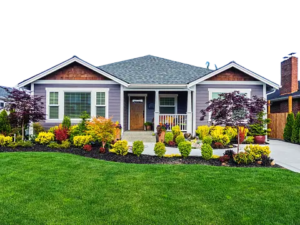When it comes to controlling sound in a room, there are essentially two main options based on what your goals are. If you are looking to control as much sound as possible and reduce the sound escaping a room, you might want to look into foam acoustic panels. These are the panels that you are probably most familiar with. They are the most easily recognizable and you have probably seen them on television. These acoustic foam panels are usually designed with cone or pyramid shapes that make them resemble egg crate foam mattress covers. In fact, they resemble mattress covers so much that many people on a budget have attempted to use the mattress covers as low-cost acoustic panels. They are somewhat effective, but true acoustic panels are denser and more carefully designed.
The other kind of acoustic panel is a wood panel. These are built a little bit differently and with different goals. Whereas foam panels seek to stop air from carrying sound waves through the panels, wooden panels only seek to slow down the sound waves so they are not as loud. They accomplish this by containing several very small holes all over the surface of the board. The air and sound hit the board and pass through, but the holes slow down their progress. A normal wall would not allow the air to pass through, causing it to bounce and the sound would continue to travel. So, by slowing the sound waves but allowing them to travel through, the sound is reduced. The energy lost by the sound waves is translated as heat inside the wall. For sound control, modern and traditional acoustic panels offer different advantages and disadvantages.
Foam
Foam acoustic panels are the most effective kinds of panels for certain applications. They are most commonly seen in music studios for several reasons. They are cheap and effective ways to control sound, which make them ideal for use in recording studio settings where the aesthetics of the room are not nearly as important as the acoustics. Foam panels are versatile because they can be dyed different colours as well as treated with flame retardants to offer extra protections against damage. The panels can be cut and shaped in different ways to fit the different contours of a room. They are most effective for medium to high-frequency sound waves and do not block the slower moving low-frequency waves nearly as well. To block low-frequency sound waves, acoustic panels need to be very thick foam and very dense. Typically, these very dense and very thick foam panels are placed in corners and are called “bass traps.” Also, foam acoustic panels are more easily tailored and placed to create the most desirable sound mix as opposed to eliminating sound indiscriminately.
Wooden
Wooden panels are not as effective as foam panels due to the nature of wood. Sound panels work by disrupting and absorbing the flow of air so that sound waves cannot travel. Foam does this more effectively than wood. Wood is desirable because it is much more aesthetically pleasing than foam. This is why it is often preferred for restaurants, auditoriums, and halls.

Leave a Reply
You must be logged in to post a comment.